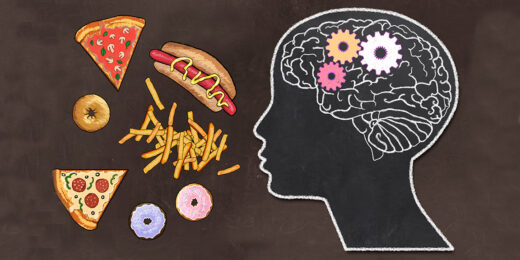Over the last decade, physicians have taken a broader view of adolescent eating disorders, thanks to a growing recognition of the variety of disordered eating patterns that can harm patients' health, especially their heart function.
As a result, hospitalization rates for adolescent eating disorders have climbed six- to seven-fold since 2010, according to a new Stanford Medicine-led study published recently in Hospital Pediatrics.
Much of the increase comes from patients who might not have been diagnosed with disordered eating in the past, including young people treated for atypical anorexia. These individuals are not underweight when diagnosed, but have undergone dangerously rapid weight loss.
More teens are also being diagnosed with a condition called avoidant/restrictive food intake disorder. In ARFID, which was formally recognized in 2013, patients struggle to eat enough for reasons that aren't related to body image.
Like other eating disorders with a longer medical history -- including typical anorexia nervosa and bulimia nervosa -- atypical anorexia and ARFID can cause dangerously low blood pressure and very slow, unstable heart rate, sometimes leading to heart failure.
Eating disorders have the highest mortality rate of any psychiatric disorder. We have an opportunity here to save lives.
Megen Vo
"Eating disorders have the highest mortality rate of any psychiatric disorder," said the study's senior author, Megen Vo, MD, medical director of the Eating Disorders Outpatient Clinic at Stanford Medicine. "We have an opportunity here to save lives."
Because speedy intervention is the best predictor of successful eating disorder treatment, parents also need to recognize that eating disorders may look different from what they expect, Vo said. The study helps confirm what she sees in her treatment of patients through the Comprehensive Eating Disorders Program at Stanford Medicine Children's Health: Young people benefit when parents quickly realize that their children are in crisis and when their pediatricians are ready to take immediate action.
"We live in a time where there is a crisis of body shaming, body image dissatisfaction and diet culture," Vo said. "Eating disorders are not within a person's control; they're not something someone chooses or knows how to stop. That's why outside expert help is imperative."
A wider variety of patients
Both cultural pressures and stress play a role in the development of eating disorders, Vo said, adding that in the first year of the COVID-19 pandemic, as the stress of prolonged stay-at-home orders took hold, experts noticed a jump in the number of young people who needed hospital care.

To get a sense of how these changes related to trends over a longer period, Vo and her colleagues examined hospital admission data from 2010 to 2022 at 12 children's hospitals and medical systems across the country, including Stanford Medicine Children's Health.
Their analysis showed a fairly steady increase in eating disorder hospital admissions for adolescents aged 12 to 21 from 2010 to 2020, a large spike in 2021, and a slight decline in 2022. At the 12 hospitals, a total of 294 adolescents were hospitalized for eating disorders in 2010; hospitalizations peaked at 2,135 in 2021.
These figures represent only a small part of the problem of eating disorders, Vo noted, adding that prior studies estimate 10% of the population meets diagnostic criteria for an eating disorder at some point in their lives. Most patients receive treatment outside the hospital.
About the same number of patients were hospitalized with severe malnutrition during the years examined in the study, but over time, more patients had either no malnutrition, or it was mild to moderate. Admissions for bulimia did not change. Among those with anorexia -- which is characterized by very low food intake, inaccurate body image and a fear of weight gain -- a growing proportion had atypical anorexia, which was first recognized as a distinct diagnosis in 2013. Doctors are becoming more aware of the risks for patients who start out heavier and lose a lot of weight quickly through unsafe dieting, Vo said.
"They may not look like the traditional person you think of who has an eating disorder," Vo said. "People who start higher on the growth curve can lose more weight, faster, and go undetected even though they may have the same, if not more severe, cardiac abnormalities" as underweight patients.
They may not look like the traditional person you think of who has an eating disorder.
Megen Vo
Since the diagnosis was formally introduced, also in 2013, doctors have also hospitalized more teens for ARFID.
"The overarching theme is, they are not driven by a desire to change their body weight, shape or size; it's truly that they can't get enough calories in for whatever reason," Vo said.
Kids with ARFID may have extreme sensory sensitivities to many foods, might not respond to their body's hunger cues or may have had a bad experience with food such as an episode of choking that left them afraid to eat. These challenges may be manageable during earlier stages of childhood, but become problematic when their puberty growth spurt arrives and they suddenly need more nutrients. "You see their needs go way up but the foods they find acceptable don't change," Vo said.
What parents should know
Parents of teenagers need to be aware that traditional characteristics of an eating disorder, such as being underweight, are not the only warning signs. Skipping meals, secretive eating behavior, new aversions to foods the teen has typically eaten and becoming absorbed in fad diets can all be red flags.
What patients say about their bodies may vary depending on the person -- instead of focusing on thinness, as girls often do, a boy might say he hopes to be lean and muscular. Transgender teens may express weight and shape concerns that are linked to their gender identity which, if paired with eating changes, may raise concern for an eating disorder.
Because eating disorders can vary, parents should trust their gut if they are worried about a child's or teen's eating. The best predictor of successful treatment is intervening early, so parents should not hesitate to reach out to their pediatrician for help.
"Parents know their kids better than anyone else in the world," Vo said. "If they think something's up, something's usually up."
Supporting healthy growth
For all kids and teens, a healthy family culture focuses on everyone's inherent value rather than their body size or physical appearance. Parents can talk about all foods having a place in a balanced diet: "There's room in a day for ice cream, there's room in a day for kale," Vo said. "No foods are off limits. It's balance that is important."
Avoiding dietary comparisons between siblings is also vital, as children and teens naturally need different amounts of food at different stages of growth.
Both teens and their parents should know that continued growth is normal throughout adolescence, Vo added. Their weight is supposed to increase because of bone mineral density accrual, organ growth and muscle growth.
"Even though teens may not be growing a lot in height past their growth spurt, they are still supposed to be growing into their early 20s," she said. "If their weight is stagnating or they are worried about weight loss, we suggest coming in to their physician."
Researchers contributed to the study from Nemours Children's Hospital of Delaware in Wilmington, Delaware and Thomas Jefferson University in Philadelphia, Pennsylvania. The study did not have external funding.
Photo: Tero Vesalainen






